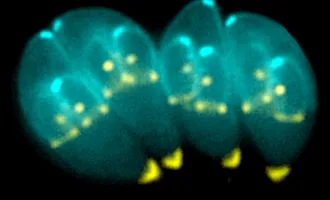Journal Club: Immunology/Caspases
Presentation: “Not in My House!”
Presenter: Lauren Rodda (second-year BMS student)
Paper: Aachoui, Y., et al. “Caspase-11 protects against bacteria that escape the vacuole,” Science, 2013 Feb 22;339(6122):975-8.
In a nutshell:
Our immune systems must distinguish between “self” and “non-self” in order to protect us from foreign invaders. Innate immunity is the part of the immune system that acts as our first line of defense. This includes physical barriers, inflammation and phagocytic antigen-presenting cells (APCs) that detect and eat up the invaders.
APCs have receptors that allow them to detect bacterial or viral components. These receptors include cell-surface toll-like receptors (TLRs) and intracellular nucleotide-binding oligomerization domain, or NOD-like receptors (NLRs). NLRs are associated with caspase-1 induced inflammatory responses. This inflammation can lead to cell death, but caspase-1 also has a canonical protective role in infection.
This paper unveils a non-canonical protective caspase: caspase-11. Caspase-11 enhanced bacterial clearance and animal survival. So can caspase-11 be activated therapeutically to enhance protection during infections? It should be noted that it, too, can have a pathological role when overwhelmed, so any therapies would require a delicate balance.



